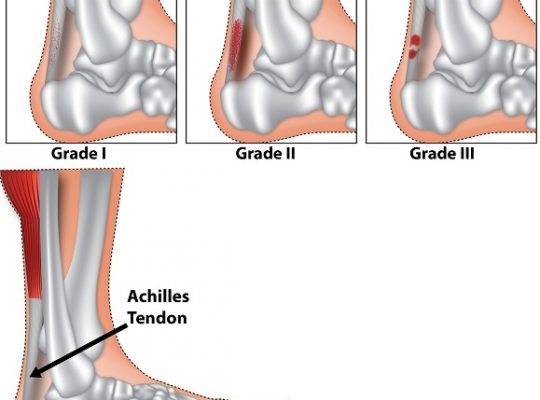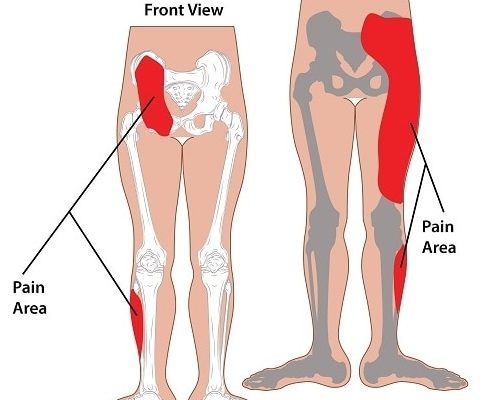Back muscle pain itself is not a disease or condition but rather a symptom of one. It can also be known by other names such as: pulled back muscle, back spasm, torn muscles of the back or back strain.
It is a very common problem in the general population and amongst those who are active in sports. It can often be classified based on region: upper, mid and lower back pain or based on the clinical course: acute, subacute, recurrent or chronic.
Causes
Most causes of low back pain are due to injuries affecting muscle, ligaments or joints. The causes of back muscle pain are numerous and are likened to an “epidemic” as the frequency of it in modern society is increasing.
A study conducted found that the annual first episode of low back pain ranges from 6.3% to 15.3% while the annual incidence of any episode of low back pain ranges between 1.5% to 36%. Back pain causes limitations of activity and work absence throughout the whole world and is associated with an enormous amount of economic burden.
It is found that back pain affects everyone regardless of age, gender, and social economic status. Women tend to have a higher prevalence compared to men and an increase in age is also associated with a higher prevalence.
The more severe cases of back pain seem to increase with age and the overall prevalence increases until the ages of 60-65. Individuals who have an occupation with a higher physical demand were also reported to have a higher prevalence of back pain compared to those who have a sedentary occupation.
Risk Factors
The genetic contribution to back pain is still questionable [1] but there appears to be a relation between genetics, body build and early environmental factors that may determine the degenerative changes of the spine. Some studies have found an association between back pain and operating heavy equipment.
In adolescents, the females too, have a higher prevalence when compared to male adolescents. Individuals involved in specific sports such as weightlifting, bodybuilding and rowing also have a higher risk for back pain.
There is no definitive cause or risk factor for back pain according to current literature. Risk factors are usually multi-factorial and only weakly associated with the development of back muscle pain.
Diagnosis
Due to the numerous causes of back pain (such as muscles, ligaments, nerves, joints, spinal discs, bones), the determination of the origin of pain can be difficult. The rate of false positive findings on imaging studies have further complicate the issue.
For example, there is evidence of herniated disc shown on computerized tomography (CT), and magnetic resonance imaging (MRI) in 20% to 76% of individuals who have no complaints of pain. It was also reported that 32% of asymptomatic individuals had abnormal findings (evidence of disc degeneration, disc bulging, nerve compression) while only 47% of symptomatic patients had abnormal findings.
Since the cause of back pain can be hard to differentiate, most diagnosis is made based on the patients’ history and examination of the patients’ back. X-rays do not identify muscle or ligament injury but can be used just like CT and MRI to rule out or aide in diagnosis.
Symptoms
Patients may present with a mild to severe pain in the back. The typical symptoms are:
- a localized back pain with no radiation down the buttock or leg
- back spasms or muscle tenderness
- stiffness in the back and pain that is aggravated by movement, relieved by rest
A more serious back injury can present as having pins and needles, numbness, tingling, weakness of any limb, altered reflexes, difficulty moving or walking, altered control of urination or defecation.
Treatment
Non-surgical treatment for back muscle pain includes:
- Physical therapy can help reduce the symptoms and incidence of back pain. It was found that early physical therapy significantly reduced the amount of work time loss and only 2% proceeded to develop chronic symptoms.
- Analgesics can be used to provide pain relief for the patient.
- Muscle relaxants may be prescribed to reduce muscle spasms and allowing it to heal.
- Immobilization and rest may be indicated in some patients until physical therapy is recommended.
- Other methods such as seeing a chiropractor for spinal manipulation or having acupuncture may also be an option.
Surgery may be recommended for those who do not show improvement with non-surgical treatments or in emergencies when there is involvement of the nerves resulting in loss of bladder and bowel control.
Other management includes strengthening and endurance exercises to prevent and reduce future events of back muscle pain. Patient education should also be done and includes the importance of maintenance exercises and how to prevent future events of back pain.
Back muscle pain is a very common problem and occurs in everyone regardless of age or gender. There are some identified risk factors which have shown that females and those who have a higher physical demand are more likely to have back pain.
With early physical therapy, the prognosis of patients with back pain is very good but some cases may require surgery. Patient education is important as it may help reduce and prevent future episodes of back pain.
SOURCES
[1] Delitto A, George SZ, Van Dillen L Et al. Low back pain: Clinical practice guidelines linked to the international classification of functioning, disability and health from the orthopaedic section of the American physical therapy association. Journal of Orthopaedics Sports Physical Therapy. 2012; 42(4):A1-A57.
[2] Hoy D, Brooks P, Blyth F, Buchbinder R. The Epidemiology of low back pain. Best Pract Res Clin Rheumatol. 2010; 24:769-781.
[3] Kent PM, Keating JL. The epidemiology of low back pain in primary care. Chiropr Osteopat. 2005; 13:13.
[4] Steenstra IA, Verbeek JH, Heymans MW, Bongers PM. Prognostic factors for duration of sick leave in patients sick listed with acute low back pain: a systematic review of the literature. Occup Environ Med. 2005; 62:851-860.
[5] Thelin A, Holmberg S, Thelin N. Functioning in neck and low back pain from a 12-year perspective: a prospective population-based study. J Rehabil Med. 2008; 40:555-561.
[6] Bener A, Alwash R, Gaber T, Lovasz G. Obesity and low back pain. Coll Antropol. 2003; 27:95-104.






